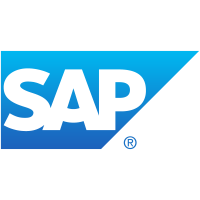
SAP SE
XETRA:SAP


| US |

|
Johnson & Johnson
NYSE:JNJ
|
Pharmaceuticals
|
| US |

|
Berkshire Hathaway Inc
NYSE:BRK.A
|
Financial Services
|
| US |

|
Bank of America Corp
NYSE:BAC
|
Banking
|
| US |

|
Mastercard Inc
NYSE:MA
|
Technology
|
| US |

|
UnitedHealth Group Inc
NYSE:UNH
|
Health Care
|
| US |

|
Exxon Mobil Corp
NYSE:XOM
|
Energy
|
| US |

|
Pfizer Inc
NYSE:PFE
|
Pharmaceuticals
|
| US |

|
Palantir Technologies Inc
NYSE:PLTR
|
Technology
|
| US |

|
Nike Inc
NYSE:NKE
|
Textiles, Apparel & Luxury Goods
|
| US |

|
Visa Inc
NYSE:V
|
Technology
|
| CN |

|
Alibaba Group Holding Ltd
NYSE:BABA
|
Retail
|
| US |

|
3M Co
NYSE:MMM
|
Industrial Conglomerates
|
| US |

|
JPMorgan Chase & Co
NYSE:JPM
|
Banking
|
| US |

|
Coca-Cola Co
NYSE:KO
|
Beverages
|
| US |

|
Walmart Inc
NYSE:WMT
|
Retail
|
| US |

|
Verizon Communications Inc
NYSE:VZ
|
Telecommunication
|
Utilize notes to systematically review your investment decisions. By reflecting on past outcomes, you can discern effective strategies and identify those that underperformed. This continuous feedback loop enables you to adapt and refine your approach, optimizing for future success.
Each note serves as a learning point, offering insights into your decision-making processes. Over time, you'll accumulate a personalized database of knowledge, enhancing your ability to make informed decisions quickly and effectively.
With a comprehensive record of your investment history at your fingertips, you can compare current opportunities against past experiences. This not only bolsters your confidence but also ensures that each decision is grounded in a well-documented rationale.
Do you really want to delete this note?
This action cannot be undone.

| 52 Week Range |
160.2527
280.3
|
| Price Target |
|
We'll email you a reminder when the closing price reaches EUR.
Choose the stock you wish to monitor with a price alert.

|
Johnson & Johnson
NYSE:JNJ
|
US |

|
Berkshire Hathaway Inc
NYSE:BRK.A
|
US |

|
Bank of America Corp
NYSE:BAC
|
US |

|
Mastercard Inc
NYSE:MA
|
US |

|
UnitedHealth Group Inc
NYSE:UNH
|
US |

|
Exxon Mobil Corp
NYSE:XOM
|
US |

|
Pfizer Inc
NYSE:PFE
|
US |

|
Palantir Technologies Inc
NYSE:PLTR
|
US |

|
Nike Inc
NYSE:NKE
|
US |

|
Visa Inc
NYSE:V
|
US |

|
Alibaba Group Holding Ltd
NYSE:BABA
|
CN |

|
3M Co
NYSE:MMM
|
US |

|
JPMorgan Chase & Co
NYSE:JPM
|
US |

|
Coca-Cola Co
NYSE:KO
|
US |

|
Walmart Inc
NYSE:WMT
|
US |

|
Verizon Communications Inc
NYSE:VZ
|
US |
This alert will be permanently deleted.
 SAP SE
SAP SE
SAP SE


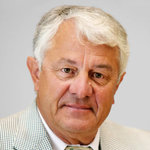

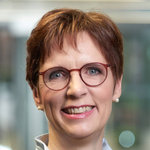
SAP SE, launched in the early 1970s by five former IBM employees, transformed Germany's technology landscape with its pioneering approach to enterprise resource planning (ERP) software. The founders, envisioning a solution to optimize business processes, created a system that seamlessly integrated various functions like finance, human resources, and logistics into a single platform. This innovative approach allowed companies to enhance efficiency, transparency, and decision-making capabilities. Over the decades, SAP has not only refined its core ERP applications but has also expanded its suite with a wide range of business software solutions, including supply chain management, customer relationship management, and data analytics, leveraging the power of cloud computing to solidify its place as a dominant force in the global software market.
SAP's revenue model hinges on licensing fees for its software products and subscription-based services. Its traditional on-premise solutions require an upfront investment for licenses and ongoing maintenance fees, while its cloud offerings cater to businesses looking for scalable, pay-as-you-go solutions. Furthermore, SAP generates revenue through professional services, advisory roles, and support plans, providing clients with implementation, customization, and continuous assistance. By maintaining strong relationships with its expansive ecosystem of partners, SAP ensures that its software continues to evolve and adapt to the ever-changing demands of today's digital economy, cementing its status as a crucial backbone for enterprises worldwide.

SAP SE, launched in the early 1970s by five former IBM employees, transformed Germany's technology landscape with its pioneering approach to enterprise resource planning (ERP) software. The founders, envisioning a solution to optimize business processes, created a system that seamlessly integrated various functions like finance, human resources, and logistics into a single platform. This innovative approach allowed companies to enhance efficiency, transparency, and decision-making capabilities. Over the decades, SAP has not only refined its core ERP applications but has also expanded its suite with a wide range of business software solutions, including supply chain management, customer relationship management, and data analytics, leveraging the power of cloud computing to solidify its place as a dominant force in the global software market.
SAP's revenue model hinges on licensing fees for its software products and subscription-based services. Its traditional on-premise solutions require an upfront investment for licenses and ongoing maintenance fees, while its cloud offerings cater to businesses looking for scalable, pay-as-you-go solutions. Furthermore, SAP generates revenue through professional services, advisory roles, and support plans, providing clients with implementation, customization, and continuous assistance. By maintaining strong relationships with its expansive ecosystem of partners, SAP ensures that its software continues to evolve and adapt to the ever-changing demands of today's digital economy, cementing its status as a crucial backbone for enterprises worldwide.
Earnings Calls
Management

Christian Klein is the Chief Executive Officer (CEO) of SAP SE, a leading global enterprise software company headquartered in Germany. Born in 1980 in Mosbach, Germany, Klein pursued his education in Management and Business Administration at the University of Cooperative Education in Mannheim, where he earned his degree in 1999. Klein's career at SAP began in 1999, and he has held various roles within the company, gaining extensive experience across different business units. He rapidly climbed the corporate ladder due to his profound understanding of SAP's operations and strategic vision. Before becoming CEO, Klein served in several key positions, including Chief Operating Officer (COO) and was an instrumental figure in driving SAP's business transformation and cloud initiatives. In October 2019, Klein was appointed co-CEO of SAP, sharing responsibilities with Jennifer Morgan. In April 2020, he became the sole CEO following Morgan's departure, taking the responsibility of steering the company through the challenges posed by changes in the global business environment and the rapid technological shifts towards cloud computing. Klein is known for his focus on integrating intelligent technologies into SAP's portfolio and enhancing the company's enterprise resource planning (ERP) capabilities. Under his leadership, SAP has focused on sustainability and has reinforced its commitment to innovation and customer-centric solutions to empower businesses around the world.

Klein's career at SAP began in 1999, and he has held various roles within the company, gaining extensive experience across different business units. He rapidly climbed the corporate ladder due to his profound understanding of SAP's operations and strategic vision. Before becoming CEO, Klein served in several key positions, including Chief Operating Officer (COO) and was an instrumental figure in driving SAP's business transformation and cloud initiatives.
In October 2019, Klein was appointed co-CEO of SAP, sharing responsibilities with Jennifer Morgan. In April 2020, he became the sole CEO following Morgan's departure, taking the responsibility of steering the company through the challenges posed by changes in the global business environment and the rapid technological shifts towards cloud computing.
Klein is known for his focus on integrating intelligent technologies into SAP's portfolio and enhancing the company's enterprise resource planning (ERP) capabilities. Under his leadership, SAP has focused on sustainability and has reinforced its commitment to innovation and customer-centric solutions to empower businesses around the world.

Lars Lamade is an executive at SAP SE, involved in managing strategic initiatives within the company. He serves as the Global Vice President for Strategic Customer Engagements. In this role, Mr. Lamade is responsible for driving high-impact customer relationships and ensuring the alignment of SAP's solutions with the strategic goals of its top-tier clients. His extensive experience in enterprise software and customer engagement strategies enables him to foster partnerships that leverage SAP's technology to achieve transformative business outcomes for their customers. Through his leadership, he plays a critical role in strengthening SAP's position as a leader in the global software industry.


Dr. Hasso C. Plattner is a prominent figure in the technology industry, best known as a co-founder of SAP SE, a multinational software corporation that is a market leader in enterprise application software. Born on January 21, 1944, in Berlin, Germany, Plattner studied communications engineering at the University of Karlsruhe in Germany. In 1972, Plattner co-founded SAP AG (now SAP SE) along with four colleagues, all former IBM employees. The company started with a focus on real-time business data processing, and under their leadership, it quickly evolved to become one of the world’s leading providers of enterprise software solutions. Over the years, SAP has expanded its product offerings, addressing various aspects of business operations and becoming a key player in the software industry. Dr. Plattner served as the CEO of SAP until 2003, when he transitioned to the role of Chairman of the Supervisory Board. As Chairman, he has continued to influence the strategic direction of SAP, focusing on advancements in technologies such as in-memory computing, cloud computing, and big data. In addition to his work with SAP, Plattner is also known for his philanthropic efforts and contributions to education and research. He founded the Hasso Plattner Institute (HPI) in Potsdam, Germany, which is dedicated to IT systems engineering and innovation, and has supported various initiatives to promote tech development and accessibility to education. Dr. Hasso Plattner is widely recognized for his impact on the technology industry, and he is considered one of the most significant entrepreneurs in the business software sector. His leadership has earned him numerous accolades and made SAP a central player in enterprise solutions worldwide.

In 1972, Plattner co-founded SAP AG (now SAP SE) along with four colleagues, all former IBM employees. The company started with a focus on real-time business data processing, and under their leadership, it quickly evolved to become one of the world’s leading providers of enterprise software solutions. Over the years, SAP has expanded its product offerings, addressing various aspects of business operations and becoming a key player in the software industry.
Dr. Plattner served as the CEO of SAP until 2003, when he transitioned to the role of Chairman of the Supervisory Board. As Chairman, he has continued to influence the strategic direction of SAP, focusing on advancements in technologies such as in-memory computing, cloud computing, and big data.
In addition to his work with SAP, Plattner is also known for his philanthropic efforts and contributions to education and research. He founded the Hasso Plattner Institute (HPI) in Potsdam, Germany, which is dedicated to IT systems engineering and innovation, and has supported various initiatives to promote tech development and accessibility to education.
Dr. Hasso Plattner is widely recognized for his impact on the technology industry, and he is considered one of the most significant entrepreneurs in the business software sector. His leadership has earned him numerous accolades and made SAP a central player in enterprise solutions worldwide.

Dominik Asam is recognized for his significant contributions in financial leadership within the corporate world, particularly in technology and engineering sectors. Asam joined SAP SE as the Chief Financial Officer (CFO) in March 2023. Before his tenure at SAP, he was notably the CFO of Airbus, a major player in the aerospace industry, where he managed financial strategies and operations from 2019 to 2023. Asam's career is distinguished by his extensive experience in corporate finance, mergers and acquisitions, and strategic leadership across several industries. He began his career at Goldman Sachs, where he honed his skills in investment banking. He has also held significant roles at Siemens AG, Infineon Technologies AG, and RWE AG, where he worked on refining financial processes and contributing to strategic growth initiatives. At SAP, Dominik Asam is instrumental in overseeing financial operations, steering financial strategy, and contributing to the company's overall growth and transformation in the rapidly evolving tech industry. He is appreciated for his analytical approach, leadership acumen, and his ability to drive financial efficiency and profitability in large multinational corporations. Asam's educational background in business administration and engineering further complements his extensive experience, enhancing his effectiveness in his role as CFO.

Asam's career is distinguished by his extensive experience in corporate finance, mergers and acquisitions, and strategic leadership across several industries. He began his career at Goldman Sachs, where he honed his skills in investment banking. He has also held significant roles at Siemens AG, Infineon Technologies AG, and RWE AG, where he worked on refining financial processes and contributing to strategic growth initiatives.
At SAP, Dominik Asam is instrumental in overseeing financial operations, steering financial strategy, and contributing to the company's overall growth and transformation in the rapidly evolving tech industry. He is appreciated for his analytical approach, leadership acumen, and his ability to drive financial efficiency and profitability in large multinational corporations. Asam's educational background in business administration and engineering further complements his extensive experience, enhancing his effectiveness in his role as CFO.

Margret Klein-Magar is a seasoned professional known for her long-standing career with SAP SE, a leading multinational software corporation based in Germany. During her tenure at SAP, she made significant contributions to the company's growth and development. Klein-Magar held various leadership roles, focusing on human resources and employee engagement, which were pivotal in fostering a dynamic and inclusive corporate culture. She was instrumental in driving initiatives related to diversity, professional development, and workforce innovation, aligning them with SAP's strategic objectives. Her leadership skills and commitment to enhancing employee experience have been recognized both within and outside the organization. In addition to her role at SAP, she has also contributed to broader HR and business communities through her participation in industry conferences and thought leadership, sharing insights on effective HR practices and organizational management. Her work at SAP has left a lasting impact on the company's approach to employee engagement and diversity.


Dr. Christine Regitz is an accomplished executive at SAP SE, the global technology company. She is known for her extensive experience in software development, management, and her contributions to innovation in technology. Regitz holds a degree in business administration and physics, and she earned her Ph.D. in economics. At SAP, Regitz has held several key positions that leverage her deep expertise in technology and organizational development. As an advocate for diversity and inclusion, she has worked towards increasing the participation of women in IT and leadership roles, often engaging in various initiatives within and outside SAP to promote these causes. Dr. Regitz has been actively involved in fostering collaboration between technical and business teams, ensuring that innovative solutions meet the market demands and enhance business processes. She has also played a pivotal role in community initiatives, serving in leadership roles in various professional organizations related to IT and software engineering. Aside from her professional roles, she is a recognized speaker and thought leader in technology forums, frequently addressing topics related to digital transformation, innovation, and the future of work. Her contributions have been instrumental in shaping strategies that align technology with business objectives at SAP SE.

At SAP, Regitz has held several key positions that leverage her deep expertise in technology and organizational development. As an advocate for diversity and inclusion, she has worked towards increasing the participation of women in IT and leadership roles, often engaging in various initiatives within and outside SAP to promote these causes.
Dr. Regitz has been actively involved in fostering collaboration between technical and business teams, ensuring that innovative solutions meet the market demands and enhance business processes. She has also played a pivotal role in community initiatives, serving in leadership roles in various professional organizations related to IT and software engineering.
Aside from her professional roles, she is a recognized speaker and thought leader in technology forums, frequently addressing topics related to digital transformation, innovation, and the future of work. Her contributions have been instrumental in shaping strategies that align technology with business objectives at SAP SE.

Monika Kovachka-Dimitrova is a recognized leader at SAP SE, where she serves as the Senior Vice President and Head of Global Treasury. In this role, she is responsible for overseeing the company's treasury operations worldwide, managing financial risks, and ensuring the effective allocation and optimization of the company's financial resources. With a deep background in financial management and strategy, Monika has successfully navigated the complexities of global finance, implementing innovative solutions that enhance SAP’s financial resilience. Her leadership has been instrumental in guiding the company through various financial challenges, leveraging her expertise to drive efficiency and effectiveness across SAP's financial operations. Monika holds a degree in finance and has accumulated extensive experience in the field, having previously worked in various key roles that honed her skills in financial planning, risk management, and corporate finance. Her contributions to SAP's strategic financial initiatives are highly regarded, making her a vital part of the company's executive team.

With a deep background in financial management and strategy, Monika has successfully navigated the complexities of global finance, implementing innovative solutions that enhance SAP’s financial resilience. Her leadership has been instrumental in guiding the company through various financial challenges, leveraging her expertise to drive efficiency and effectiveness across SAP's financial operations.
Monika holds a degree in finance and has accumulated extensive experience in the field, having previously worked in various key roles that honed her skills in financial planning, risk management, and corporate finance. Her contributions to SAP's strategic financial initiatives are highly regarded, making her a vital part of the company's executive team.
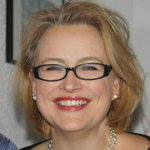
Heike Steck is a notable executive at SAP SE, a German multinational software corporation known for its enterprise software to manage business operations and customer relations. With a robust background in finance, technology, and leadership, she plays a crucial role within the organization. Steck has held various significant positions within SAP, focusing primarily on financial strategy and operations. Her expertise in global financial markets and her strategic vision have contributed to SAP's competitive edge in the global software industry. Known for her leadership skills, Steck is praised for her ability to drive change and facilitate growth within the company. Apart from her professional role, Heike Steck is recognized for her commitment to fostering an inclusive workplace culture and supporting initiatives that promote diversity and sustainability. Her contributions extend beyond SAP, as she is also engaged in various industry forums and philanthropic efforts. Her educational background in finance and management, combined with years of experience in the tech industry, makes her a valuable asset to SAP SE. Steck's work continues to influence SAP's strategic direction and its mission to help the world run better and improve people's lives through innovative technology and solutions.

Steck has held various significant positions within SAP, focusing primarily on financial strategy and operations. Her expertise in global financial markets and her strategic vision have contributed to SAP's competitive edge in the global software industry. Known for her leadership skills, Steck is praised for her ability to drive change and facilitate growth within the company.
Apart from her professional role, Heike Steck is recognized for her commitment to fostering an inclusive workplace culture and supporting initiatives that promote diversity and sustainability. Her contributions extend beyond SAP, as she is also engaged in various industry forums and philanthropic efforts.
Her educational background in finance and management, combined with years of experience in the tech industry, makes her a valuable asset to SAP SE. Steck's work continues to influence SAP's strategic direction and its mission to help the world run better and improve people's lives through innovative technology and solutions.

Sebastian Steinhaeuser is a notable executive who has been associated with SAP SE, a leading enterprise application software company. At SAP, he has held key positions, contributing significantly to the company's strategic and operational initiatives. Known for his expertise in innovation, technology strategy, and business development, Steinhaeuser has played an instrumental role in driving SAP's growth and development. His leadership style and ability to foster collaboration and innovation within teams have made him a valuable asset to SAP. Under his guidance, SAP has continued to advance in delivering cutting-edge solutions that meet the evolving needs of businesses worldwide.

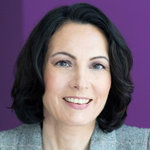
Gina Vargiu-Breuer is a notable executive at SAP SE, where she serves as the Chief Diversity and Inclusion Officer. In this role, she is responsible for spearheading the company's global diversity and inclusion agenda. With a strong commitment to fostering an inclusive workplace, she leads initiatives aimed at promoting diversity across all levels of the organization, enhancing employee engagement, and nurturing a culture of belonging. Her career at SAP is marked by her dedication to people-oriented leadership and a strategic approach to diversity and inclusion. She has been instrumental in developing policies and programs that support the recruitment, retention, and advancement of a diverse workforce, recognizing the importance of varied perspectives in driving innovation and business success. Vargiu-Breuer's work extends beyond SAP as she actively engages with external partners and stakeholders to promote diversity and inclusion across the tech industry. Her efforts are focused on driving systemic change and ensuring that SAP continues to be a leader in cultivating a diverse workforce. Her leadership is characterized by a passion for social justice and equality, and she continues to be a vital advocate for creating equitable opportunities within SAP and the broader technology community.

Her career at SAP is marked by her dedication to people-oriented leadership and a strategic approach to diversity and inclusion. She has been instrumental in developing policies and programs that support the recruitment, retention, and advancement of a diverse workforce, recognizing the importance of varied perspectives in driving innovation and business success.
Vargiu-Breuer's work extends beyond SAP as she actively engages with external partners and stakeholders to promote diversity and inclusion across the tech industry. Her efforts are focused on driving systemic change and ensuring that SAP continues to be a leader in cultivating a diverse workforce.
Her leadership is characterized by a passion for social justice and equality, and she continues to be a vital advocate for creating equitable opportunities within SAP and the broader technology community.





























 You don't have any saved screeners yet
You don't have any saved screeners yet
